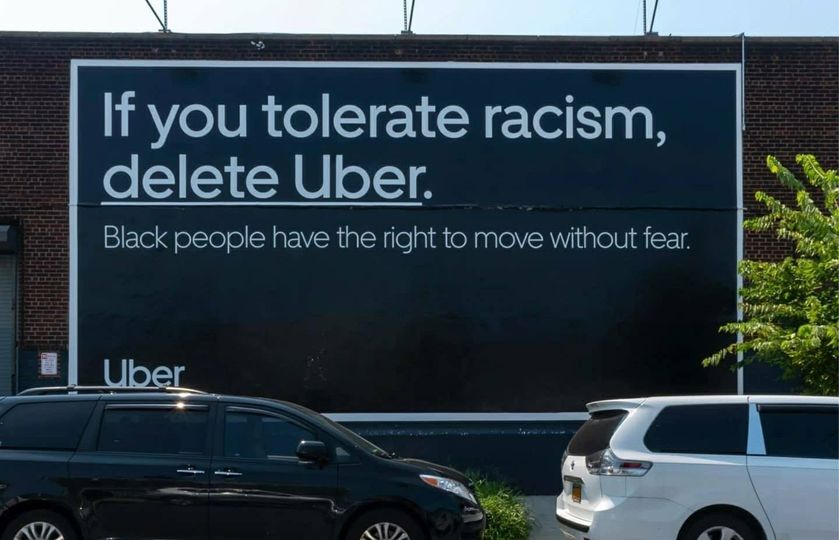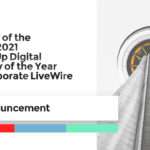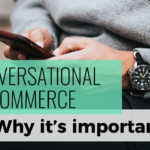Staying on brand: A consumer psychological perspective
We are constantly bombarded with endless choices across every platform. From social media feeds to YouTube ads and streaming services, companies compete for our attention by pushing products, services, and messages at every turn. This can—and does—overwhelm consumers, making it harder to focus, process information, and make decisions.
In this cluttered environment, brands must work even harder to stand out and build meaningful connections with their audience.
One way to fight this battle: Stay on brand.
Brand consistency is one of the most critical factors that can make or break a business. From the colors and fonts used in marketing materials to the tone of voice in communication, maintaining a cohesive and consistent brand presence is about more than aesthetics—it’s about psychology.
When a brand is consistent, it doesn’t just build recognition, it fosters trust, loyalty, and a sense of reliability, all of which have profound psychological effects on consumers.
6 Reasons why brand consistency is so important from a psychological perspective:
1. Recognition and familiarity in decision making
One of the most significant psychological factors at play in brand consistency is the principle of familiarity. Humans are creatures of habit, and we tend to gravitate towards things we recognize. The mere exposure effect, a psychological phenomenon, suggests that the more we are exposed to something, the more we tend to prefer it.
When a brand consistently uses the same colors, fonts, logo, and messaging across platforms and touch points, it becomes familiar to the customer. This familiarity leads to recognition, which is the first step towards building a relationship with the consumer.
Familiar brands often win because they reduce the mental effort required to choose.
Case Study: KIA
In January 2021, KIA decided to rebrand itself — and it was not well received. It produced an unveiling show filled with amazing fireworks that even broke the Guiness World Record for number of fireworks set off by unmanned aerial vehicles. Yet, the newly streamlined logo was met with a ‘disastrous’ reaction.
People on the internet were outraged and wondered why the change had been done, as the brand was seemingly not out-of-date. Many also found the new logo to be less legible, thinking it had changed its name to KN. Indeed, it was reported in 2022 that 30 000 people in the US alone google “KN Car” every single month.
Objectively, there is nothing wrong with the new logo. It is modern, eye-catching, distinct and visually well-balanced.
The problem is how far it deviated from the original brand, ultimately alienating customers from what they had come to expect from the brand for decades.
As per Inc.com, “The new logo represented a significant departure from [KIA’s] previous logo, which was well-established and recognizable. The new logo was too great a departure from the old version. It lacked continuity for loyal customers.”
2. Building trust through predictability
Trust is the cornerstone of any successful relationship, and this is no different in the relationship between brands and customers. Brand consistency fosters this trust by creating a sense of predictability.
Psychologically, humans are wired to prefer certainty over uncertainty. We feel safer when we know what to expect, and this is why consistency is so vital in branding. Because humans want to feel safe.
When a brand delivers a consistent message, experience, or product, it reassures the customer that the brand is reliable. If a brand’s messaging or tone fluctuates, it can create a sense of unpredictability that may cause the customer to feel uneasy or skeptical. Customers will be more hesitant to trust a brand if they feel it may not deliver on its promises.
By staying consistent, brands reinforce a sense of reliability, making customers feel more comfortable engaging with them.
%
of consumers
are more likely to purchase products or services from brands they know and trust, even if they aren’t the cheapest options.
3. Cognitive ease and reduced decision fatigue
Let’s talk about cognitive load and decision fatigue.
The brain is constantly processing vast amounts of information, and in a consumer context, this means evaluating countless products, services, and messages.
Decision fatigue is a well-known psychological phenomenon where the brain becomes overwhelmed by too many choices and starts to make suboptimal decisions or avoids making decisions altogether. In a shopping context, this can lead to confusion, impulsive or regrettable purchases, or even delaying decisions altogether.
A consistent brand eases the cognitive load by making it easier for the customer to identify the brand’s offerings quickly and understand what it stands for. A consistent message, look, and feel across different platforms allows customers to make faster, easier decisions, because they don’t have to re-evaluate the brand every time they encounter it. They already know what to expect and can focus on what they need.
In other words: simplify the message, and you will reduce their cognitive load.
Whether you walk into a Starbucks in New York, Tokyo, or Paris, the experience is almost identical. From the menu to the packaging, the experience is highly predictable, making the decision to eat there a simple one for customers around the globe.
Case Study: Starbucks
The best time to update your logo is when there is a fundamental shift in your brand experience. Performing the update on such situations serves to signal that change.
When Starbucks updated its branding back in 2011, the intent was to enable the company to move beyond just the coffee market. Therefore, one of the key elements of the update was removing the word “coffee” from the logo.
The team didn’t stop there. They knew that the double-tailed mermaid needed to be carried forward. Yet they realized that her perfect symmetry was not working. She was almost too perfect, contrived, or maybe even fake.
“As a team we were like, ‘There’s something not working here, what is it?’” recounts global creative director Connie Birdsall at Lippincott. “It was like, ‘Oh, we need to step back and put some of that humanity back in. The imperfection was important to making her really successful as a mark.”
Specifically, making her imperfect was achieved by having her nose dip slightly lower on the right side. (Can you see it now?)
Humanising the iconic mermaid was the main impetus for the update to Starbuck’s brand, and they nailed it.
When giving your brand a facelift, the crux will be knowing how to hold on to the essence of your brand’s attributes and graphic elements that resonate most with your core customers, and on which the brand still communicates well.
4. Creating emotional connections
A consistent brand experience isn’t just about logic and recognition—it’s also about creating and maintaining an emotional bond with the customer. When a brand stays consistent in its communication style, messaging, and values, it nurtures an emotional connection with its audience. This emotional connection is what drives customer loyalty.
From a psychological standpoint, emotions play a central role in decision-making. Studies have shown that people make decisions based on how they feel about a brand, not just what they think about it. Consistent branding strengthens emotional ties by continually reinforcing the brand’s identity and what it stands for.
Gallup found that about 70% of decisions, including brand preference, are based on emotional factors, and only 30% are based on rational factors. And up to 70% of customers with high emotional engagement spend two times or more on brands they are loyal to, per the Digital Transformation Institute.
Emotional branding plays a key role in setting a brand apart in a competitive market. By fostering emotional connections with consumers, brands create loyalty that often withstands the lure of cheaper alternatives.
Additionally, since emotional experiences tend to be more memorable than purely rational ones, emotional branding enhances brand recall and recognition, helping brands stay top-of-mind for consumers and for longer-term. A Motista study showed that customers emotionally connected to brands have a 306% higher lifetime value (5.1 years) than satisfied customers (3.4 years).
An example of emotional branding: In 2020, on the 57th anniversary of Martin Luther King’s iconic ‘I have a dream’ speech, Uber released a set of outdoor ads against racial injustice. By resonating with the emotions surrounding Black Lives Matter and global social unrest, Uber strengthened relationships with customers who shared its perspective.
Image courtesy of Ad Age.
5. Standing out through differentiation and clarity
A brand’s ability to differentiate itself is crucial for its very survival.
Consistency helps define a brand’s identity, making it easier for customers to distinguish it from competitors. Psychologically, this taps into the need for clarity and definition.
When customers can clearly identify what a brand stands for, they are more likely to feel aligned with its values and choose it over less defined competitors.
Brand clarity is rooted in a profound understanding of why your brand exists. Where does it fit in the world? What is its purpose? What value does it bring to your customers’ lives? Knowing your purpose is mission critical. A recent study by Zenogroup revealed that when a brand has a strong Purpose, consumers were 4 times more likely to purchase from the brand, 4.5 times more likely to champion the brand, and 6 times more likely to protect the brand in a challenging moment.
%
of consumers
say they’re more likely to switch to a competitor if a brand lacks clarity or consistency.
6. Signal competence through professionalism
A well-coordinated, professional and cohesive brand gives the impression that the business knows what it’s doing. This is because customers often associate brand inconsistency with disorganization or a lack of professionalism.
If a company can’t keep its messaging, design, and customer experience at a professional level, customers might wonder if the business is equally unreliable in other areas, such as product quality or customer service.
Professionalism should be evident in the way a company handles themselves at every touch point amongst their colleagues, suppliers, stakeholders and customers.
When a brand consistently meets or exceeds expectations, it sends a powerful message that the company is competent and capable. This leads to a more positive perception, which translates into trust, loyalty, and higher customer retention.
Case Study: X (formerly Twitter)
Why do we still call “X” Twitter?
The recent rebrand of Twitter to “X” has sparked discomfort among users. With the iconic bird logo gone, the brand now feels unfamiliar and lacking in personality.
There are also inherently negative connotations with the symbol “X”, such as references to adult content or the act of closing or deleting something.
In math, “X” also signifies an unknown value, or a problem to be solved.
In March of 2024, the platform formerly known as Twitter provided some updated usage stats that reveal some challenges that this re-brand might have created, including:
- 250 million daily active users: this had been previously claimed in November 2022, indicating that there had been a dip in numbers over the last couple of years
- 2 min less time spent per day for the daily average users time spent on X
- 760,000 searches on X per day, down from 2.1 billion in 2016
These could all be reasons why are still calling “X” Twitter.
As CNN has explored, this could be due to a confusing roll-out of the brand. While the brand was changed in 2022, the website was only updated to x.com in 2024. During those two transitional years, the company would bill their customers as X (formerly Twitter), and users would still use those familiar terms of ‘tweet’ and ‘tweeting.’ And because the platform itself had not materially changed, users did not understand the need for the brand to change. So, they didn’t adopt it.
Or, perhaps we just really loved that little bird, and “X” doesn’t measure up.
Summary
From recognition and trust-building to easing decision fatigue and fostering emotional connections, brand consistency is vital from a psychological standpoint. It taps into fundamental aspects of human behavior, such as the preference for familiarity, predictability, and emotional resonance.
A consistent brand is not just one that looks good; it’s one that strategically aligns with the way customers think and feel, making it more likely to succeed in the marketplace. Businesses that prioritize brand consistency are far more likely to build strong, lasting relationships with their customers, creating a foundation for long-term success.
need some branding help ?
proudly servicing
AUSTRALIA | BRAZIL | CANADA | FRANCE | GERMANY | ITALY | INDIA | JAPAN | MEXICO | NETHERLANDS | NORTH AFRICA | PORTUGAL | SPAIN | SOUTH EAST ASIA | SWEDEN | SWITZERLAND | TURKEY | UNITED KINGDOM | UNITED STATES
© 2025 BLACKSOC. ALL RIGHTS RESERVED.
















